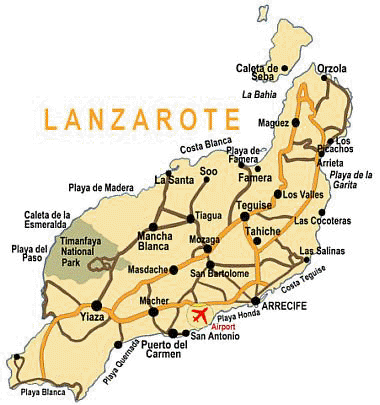
Lanzarote
is said to be the most exclusive of the Spanish Islands. The Lanzarote
climate is dominated by the North Eastern Trade Winds and the warm
Canary Stream, producing glorious summer temperatures all year round.
Attractions
include the fabulous beaches, restaurants and bars, old fishing villages
and the beautiful scenery of the Timanfaya National Park, to name just a
few. |
|
Puerto
Del Carmen
Puerto
del Carmen is the main tourist resort on the island and a town of
extremes - with the quaint and peaceful Old Town area with its harbour-side
restaurants on one hand and the purpose-built holiday area with its
numerous restaurants, shops, bright lights and superb night-life on the
other. It really does have something for everyone! You can be close to
the bright lights but away from the bustle. Puerto
del Carmen boasts over 3km of golden sand so those wanting a beach
holiday will not be disappointed.
|
|

|
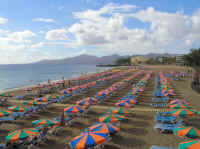
(Click
on Pictures to Enlarge) |
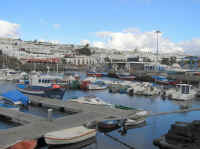
|

|
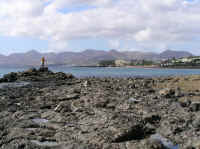
|
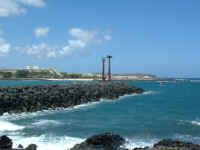
|
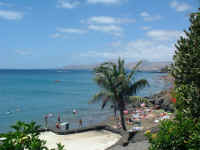
|
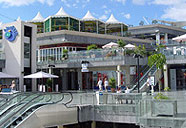
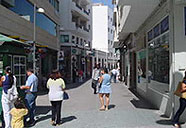
|
-
Shopping
in Lanzarote
-
-
In
Lanzarote you will find several shopping and leisure centres as well
as an array of stores and boutiques selling all kinds of goods: from
perfumes, cloths, jewellery and electrical equipments that can be
purchased at very reasonable prices to local produce and handmade
crafts.
The
shopping districts are located in the main resorts (Puerto del
Carmen, Costa Teguise and Playa Blanca), in Arrecife, capital of the
island and in Playa Honda that hosts one of the largest shopping
centre of Lanzarote.
The
most colourful shopping opportunities are provided by Teguise Sunday
Market where you can buy many interesting craft items, souvenirs and
local produce (wine, cheese and mojo sauces) which make tasty
reminders of your stay.
|
|
Strikingly
beautiful, unspoilt and uncountable… that is what can be said in
general about Lanzarote’s beaches.
Lanzarote and its islets boast 250 km (155
miles) coastline, of which only about 30 km (19 miles) are beaches and
over 30% of these are man-built. The majority of Lanzarote’s
shoreline consists of spectacular cliffs, which can rise up to 600 m
(1,970 ft), many impressive headlands (puntas), formed by
lava running into the sea, eye-catching salinas (salt pans)
or other stunning ‘nature artworks’, created by volcanic eruptions
and erosion, such as El Golfo with its bright green lagoon,
located on the west coast.
In contrast to most of the other Canary
Islands, many of Lanzarote’s beaches are small or medium-sized and
feature yellow or white sand; a few have black volcanic sand or
pebbles. A lot of the natural beaches are very secluded, devoid of any
infrastructures and getting there can be tricky. Some can only be
reached by long walks or – more comfortably – by boat. Some are
even protected areas, where bathing is not allowed and on others
swimming is not recommended because of dangerous sea currents.
But don’t worry… Lanzarote is blessed with
so many spectacular beaches that there are still more than enough left
for you to visit and you probably won’t be able to experience them
all – unless you come back to the island over and over again!
|
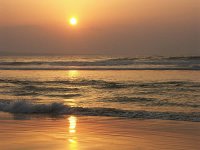
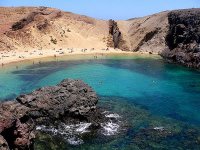
|
|
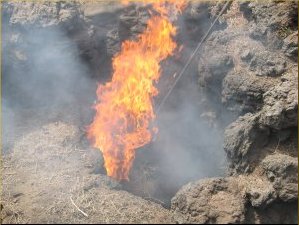
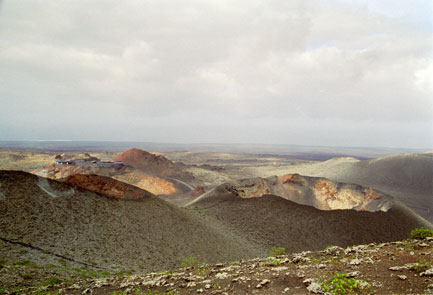
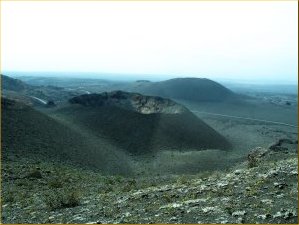
|
Timanfaya
National Park
The
Montañas del Fuego (Fire Mountains) were created between 1730 and
1736 when more than 100 volcanoes, covering more than 50 km², rose up
and devastated this part of the island (including several villages). The
last eruptions were in 1824, however due to the low rainfall (and
therefore lack of erosion) this area appears much the same as it did
just after the eruptions. In 1968 the area was declared a national park, Parque
Nacional de Timanfaya.
This part of the island is a must for any visitor to the island because
of its unique 'Martian' landscape and rare plant species. After you arrive at the visitors Car Park you will witness several
demonstrations of 'how hot' the area is (temperatures just a few metres
below the surface reach between 400°C and 600°C). Dry brush thrown into a hole in the ground catches fire immediately,
while water poured into a bore hole erupts seconds later in the form of
steam - like a mini-geyser.
The 'El Diablo' restaurant provides an impressive backdrop to all of
this and serves Canarian food which is cooked using geothermal heat (A
cast-iron grill placed over a large hole in the ground). It is advised
to arrive here early if you would like to sample the food, since the
Kitchen closes at 3.00pm.
While it is not possible to just wander freely around the Volcanoes, a
Coach Trip around the National Park (La Ruta de los Volcanos) is
included in the entry fee. The Tour features an Audio Commentary that
includes excerpts from the diary of a local Priest who was an eyewitness
to the devastating Eruptions.
It is also possible to take a Camel ride across the Volcanic landscape.
|
|
Golf
Costa
Teguise
is the older of the two Lanzarote 18-hole golf courses - was designed by
the British landscape architect, John Harris, and built in 1978. A
marvel not only for its challenging design but also for its excellent
year-round conditions. Golf Costa Teguise is located at the foot of a
spent volcano surrounded by thousands of palm trees, cactuses and, of
course, black lava and breath taking views of the Atlantic Ocean. Here,
you can appreciate how man has moulded nature while respecting its
delicate balance. Lanzarote's warm temperatures combined with this
matchless setting offer you a true golfing paradise.
Puerto
del Carmen is the newer of the two courses and is located just outside
the town of the same name. The
eighteen hole, 72 par course is 6,133 metres long and was designed by
the well-known American golf course designer, Ron Kirby. Its
location on the hills overlooking Puerto del Carmen gives it the
incredible backdrop of the Atlantic ocean and the course itself is
planted with numerous mature palm trees and other indigenous plants.
Mindful of the environmental impact, the course has been sympathetically
laid out to minimize its impact upon the surrounding countryside and
incorporates an irrigation system that uses recycled water. The
friendly bi-lingual staff at the Golf Resort will be happy to assist
anyone who wants to play a round of golf, from the absolute beginner to
advanced golfers who want to improve their game. Buggies, electronic
trolleys and clubs are all available to hire, whilst an experienced
instructor is also on hand for those who wish to take lessons, including
lessons for children. The superb climate of Lanzarote means that golfing
is possible all year round.
|
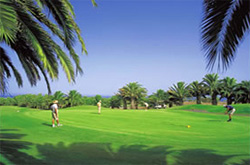
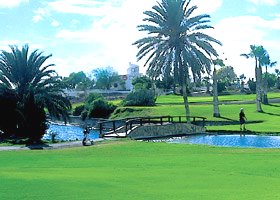
|
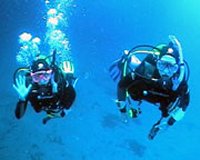
|
The
Atlantic is – next to the climate – one of the biggest attractions
the Canary Islands have to offer, and Lanzarote’s waters are often
pointed out for their excellent conditions. The average water
temperatures (rarely below 19ºC - 66ºF) allow for the practice of a
wide range of water sports all year round. The south coast is especially
inviting for swimming, diving, snorkelling or boat excursions including
game fishing, whereas the north coast, with its rougher conditions,
provides an ideal playground for windsurfing, surfing, sailing, etc…
Do not underestimate the strength of prevailing winds that are usually
at their strongest on summer afternoons. |
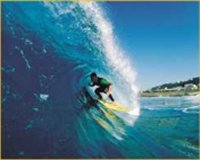 |
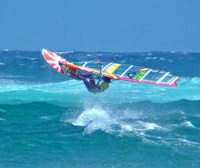 |
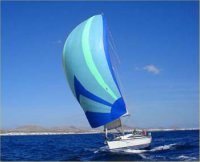 |